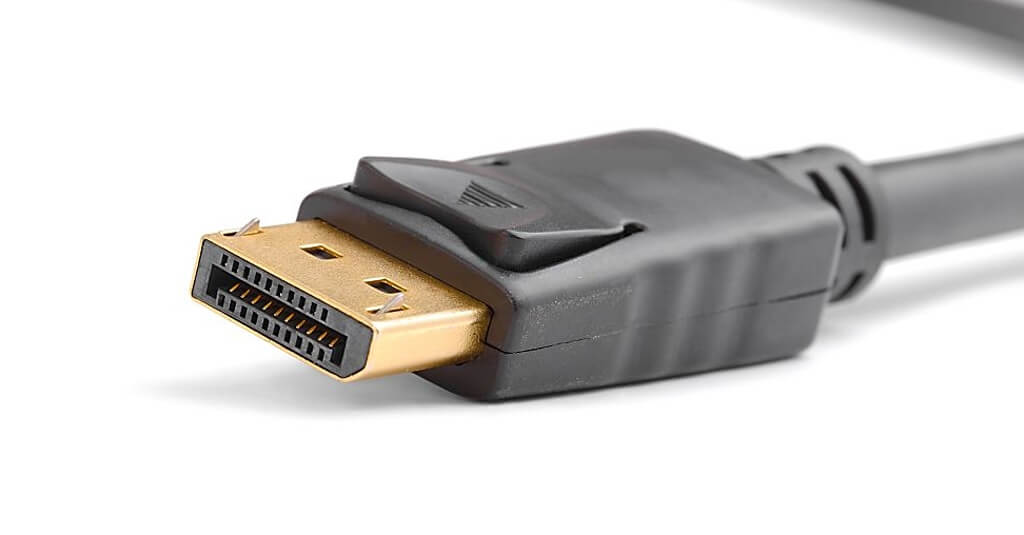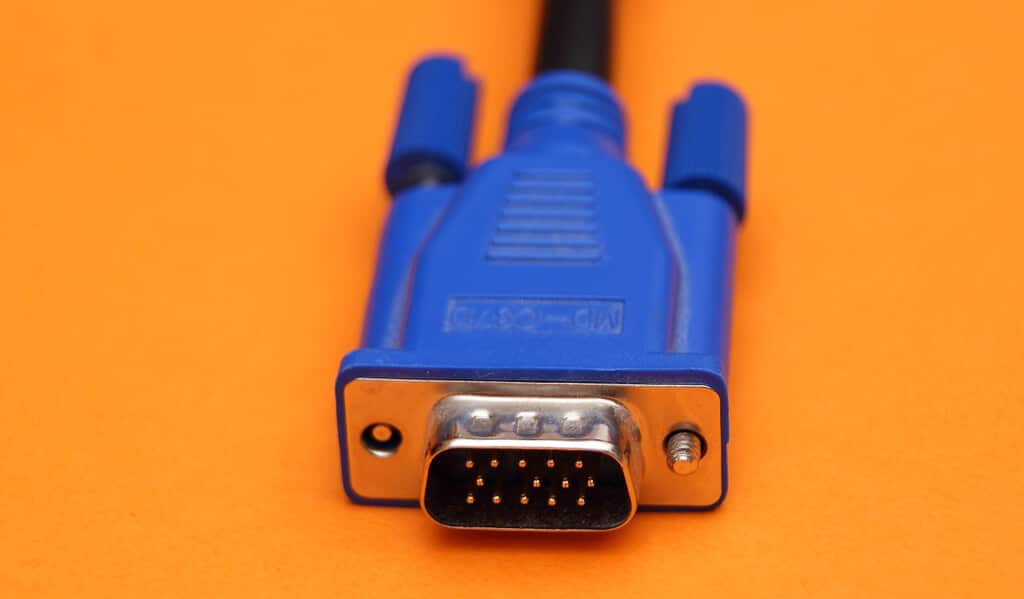When I first got my digital TV, I was excited about connecting my computer to it and seeing everything on the big screen. I knew that there were different ways that I could make the connection from my computer to the TV, so I needed to find out what the best method was as I had never done this before.
I put on my research hat and discovered that there were 4 cable connection methods:
- HDMI
- Displayport
- VGA
- DVI
I really needed to know more about each of these connection solutions so that I could decide which the best for my needs was. One of the things that I already knew was that VGA was not a pure digital connection. I discovered soon after that HDMI, Displayport and DVI were digital connection methods.
I assumed that each one of these connection methods would have its own advantages and disadvantages and confirmed this afterward. So in this article, I will reveal the output of my research so that you can decide which the best method is for you to connect your computer to your TV.
Table of Contents
Which Display Cable should I use?
The first thing to understand is that a digital connection is always going to be better than a VGA connection. Although the pixel resolution of HDMI, Displayport and DVI can vary, the overall quality will not vary.
So for example, if you were able to achieve a 1920 pixel by 1080 pixel over 60 with the three different digital connection methods, then the image quality on your TV would be precisely the same. The cables used to make the connection do not affect the quality of the image either.
Basically, any cable supporting the different digital formats at the same resolution will work as long as there are no limitations with distance. So the display cable that you use will not affect the quality of the image that you receive.
If you are thinking of buying a new computer or graphics card, then it is best if you decide on the cable connection method that you are going to use before you make a purchase. You can achieve 4K resolution with both HDMI and Displayport. If you have a 1080p monitor, then DVI will usually produce the best high frame rate results.
Modern 4K graphics cards can provide as high as a 120 Hz refresh rate. Also, the latest graphics cards from Nvidia and AMD have support for Displayport 1.4. If you want to obtain the highest possible resolution, you will need a number of top-end graphics cards, though.
What is HDMI?
High Definition Media Interface (HDMI) is standard on most digital TVs these days as well as modern laptops and graphics cards for desktop computers. One of the best things about HDMI is that it carries the audio signal in the cable as well as the video signal.

Depending on the age of your TV and computer equipment, you will either have HDMI 1.4 or HDMI 2.0. The maximum resolution with HDMI 1.4 is 3820 pixels by 2160 pixels, but with HDMI 2.0, you can experience 4K resolution at 60 Hz.
So what about HDMI cables? Well, these are usually relatively inexpensive, and if you get one for your HDMI 1.4 setup and you upgrade to HDMI 2.0, then there is a good chance that the cable will able to support the higher specifications.
You can even get HDMI cables that include an Ethernet function, but few people use this. The bottom line is that you are very unlikely to improve the image quality with a more expensive HDMI cable over a cheaper one. A more expensive cable is likely to be more robust though and withstand knocks better than a cheaper one.
Advantages of HDMI
- It is available on almost all digital TV’s as well as laptops and desktop graphics cards
- HDMI carries both the video and audio signals, so it is convenient
- It supports pretty high-resolution rates
- You can use an HDMI cable that supports Ethernet as well
Disadvantages of HDMI
- It doesn’t support really high resolution and refresh rates
What is Displayport?
The best use of Displayport is connecting computers to monitors. Here are currently two Displayport standards, which are 1.2, which can support a 3840 pixel by 2160 pixel resolution as well as 4K at 60 Hz. The Displayport 1.3 standard can support 8K at 60 Hz or 4K at 120 Hz.

With Displayport, you can operate multiple monitors from the same cable. If monitors support daisy-chaining, then Displayport is a good option. If you want to truly enjoy 4K gameplay, then Displayport is the best option to go for.
The problem is whether your TV will support Displayport or not. Most don’t, and you will need to purchase special monitors. It is a bit of a lottery whether Displayport will support audio or not. Some devices will have the support and some won’t.
Advantages of Displayport
- Used to connect computers with monitors
- You can operate many monitors from a single Displayport cable
- Has high resolution and refresh rate support
Disadvantages of Displayport
- It is not available on many digital TV’s
- Few graphics cards and laptops support Displayport
- It may or may not have audio support
What is DVI?
The Digital Visual Interface (DVI) method of connectivity is really dying out now, although almost all modern graphics cards still have a DVI connector. DVI uses the same video signal as HDMI does, but there is no audio.

With the more modern graphics cards, you can transmit audio fairly easily using a DVI to HDMI adapter (or cable). If you have a single link DVI connector, then you can achieve a maximum resolution of 1920 pixels by 1200 pixels. With a dual DVI link connector, you can achieve up to 2560 pixels by 1600 pixels.
Higher refresh rates are possible with DVI up to 144 Hz, so if you have a TV or monitor that supports 1080p and 144 Hz, then DVI is a good solution for gamers looking for a higher refresh rate. But DVI does not support 4K, and if you want this, then HDMI or Displayport is what you need.
Advantages of DVI
- Higher refresh rate support
Disadvantages of DVI
- It is dying out now
- You will only find connectors on some graphics cards
- No 4K support
What is VGA?

Visual Graphics Array (VGA) is a display connection technology that has been around for a long time. The connection is analog rather than digital, and few modern TVs have a VGA connection these days.
If you are dealing with older TVs and computer equipment, then VGA might be your only solution. The image quality is poor compared to the digital connection methods, so I would not recommend VGA unless you do not have any other choice.
Advantages of VGA
- You can use it if you have an older TV or computer equipment
- The technology has been around for a long time
Disadvantages of VGA
- Poor image quality compared to digital methods
- No audio support
Conclusion
For most applications, HDMI will provide you with the best results. If you have a laptop, then it is very likely that you will have an HDMI connector. The same goes for graphics cards used in desktop computers. The new HDMI standard supports 4K, and in my experience, the image quality and refresh rates have always been sufficient enough for my needs.
If you are a passionate gamer and want to experience high refresh rates at the top end resolutions, then you need to consider Displayport. You will have a tough time finding digital TVs that support it, but you can find a number of high-end monitors that do.
As DVI is dying out, I do not recommend that you choose this as an option even if your TV has support for it. There is no audio support audio, which means you will require another solution for this. VGA is an ancient display connection technology that I definitely wouldn’t recommend.

Be the first to comment